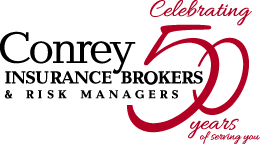Where does commercial auto exposure start and stop?
Kyle Langan, May 24, 2024
Navigating the Commercial Auto Risk Domain
Vehicles represent a nexus of risk for a business. Hazards include deliveries, client meetings, or simply the daily operation. The “ownership, maintenance, or use of vehicles creates liability loss exposures.” [1] To mitigate them, a business should optimize its strategies for titling and insuring vehicles. The goal is to transfer or finance risk arising from bodily injury or property damage perils.
Does your risk manager help your team identify and mitigate these liability loss exposures? Not understanding the technical side of Commercial Auto coverage can leave you exposed!
Components of Liability Coverage
How is coverage determined? Symbol 1 has the broadest type of liability coverage available; it applies to ‘Any Auto’ that is used for commercial purposes.
Hired autos (Symbol 8) refer to autos leased, hired, rented, or borrowed. However, “the term does not include any auto the named insured leases, hires, rents, or borrows from any of its employees, partners, limited liability members, or members of their households.” [2]
Non-owned autos (Symbol 9) “apply to vehicles owned by employees and used for company business.” [3]
Symbols 8 and 9 usefully expand upon Symbol 7, which is for specifically described autos. This protection follows vehicles specifically named in the policy and for which a premium is charged. Operations may not need Symbol 1, and it may not be available in every situation. Symbols 7, 8, and 9 may adequately protect an entity for all relevant auto exposures.
Why would a business need coverage for more than specifically scheduled autos? Non-ownership liability. Companies should seek protection for their liability stemming from employees’ operation of personal autos within the purpose of the employer’s business. For example, if an employee drives a personal vehicle for the purpose of company business, and hits another car, employers’ non-ownership liability coverage can help pay for the loss of the 3rd party’s property damage and potential bodily injury. If the 3rd party files suit for further damages later, this coverage can also help your company pay for those defense expenses. However, this protection is liability insurance for the entity; it will not pay for damages from an accident while employee drive for personal reasons that are not related to business. It is intended to cover liability damages, including settlements or judgments, attorney fees and other court costs that arise because of an auto accident for which you or an employee is responsible. The normal, daily commute to work in their personal auto is employees’ responsibility.
Lastly, executive officers may not carry personal auto insurance if he or she is furnished a company auto. In this situation, the commercial auto should include a “Drive Other Car” endorsement, so the individual named in the endorsement (including resident spouse) is driving a non-owned auto for personal use. [4]
Protecting Assets, increasing Cash Flow
How do you know if your current commercial auto insurance program is proper? Why not utilize a seasoned risk manager to help you design an optimal, tailored strategy? Our team can help you achieve proper protection, while reducing costs and increasing your profits. Contact us today.
References
Survey of Commercial Insurance. The Institutes (April, 2018).
Hired automobile. IRMI. (n.d.). https://www.irmi.com/term/insurance-definitions/hired-automobile
Nonowned automobile. IRMI. (n.d.). https://www.irmi.com/term/insurance-definitions/nonowned-automobile
Drive other car endorsement (DOC). IRMI. (n.d.). https://www.irmi.com/term/insurance-definitions/drive-other-car-endorsement
